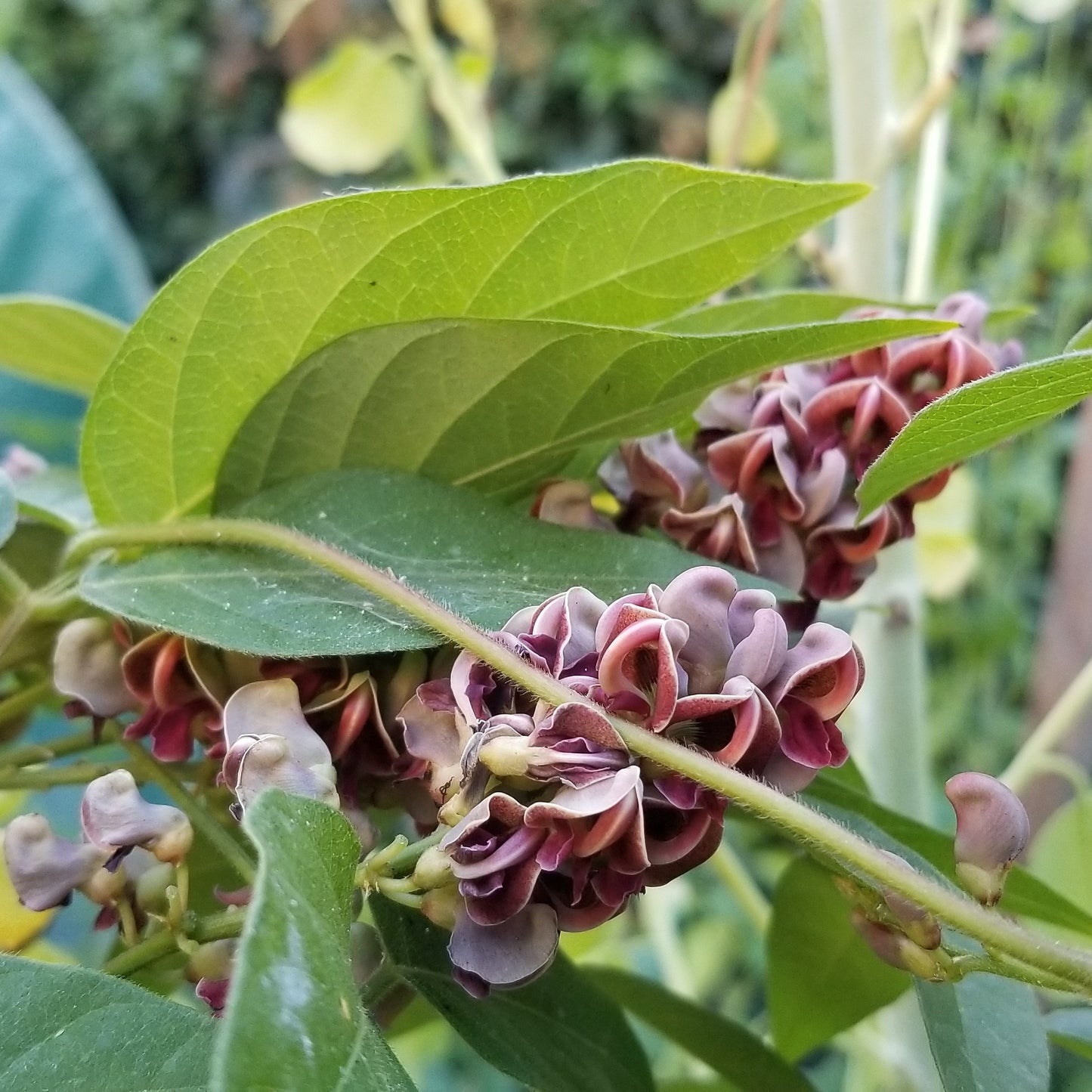Adapted Nursery Store
Hopniss tubers (American groundnuts) Apios americana
Hopniss tubers (American groundnuts) Apios americana
Couldn't load pickup availability
Hopniss AKA American groundnuts (Apios americana)
SOLD OUT! Email me at hello@gardenkevin and I'll put you on the notification list.
Delicious, nutritious, protein and starch rich tubers (cooked)
Nitrogen fixer -- leguminous
Hardy to Zone 5
Vine layer plant
Full sun to partial shade
Likes soil on the moist side
Good in ground and in containers (see more below)
Winter dormant
Eastern North America native
See my YouTube Videos about hopniss tubers
Lots of people call this plant "American groundnuts" or just "ground nuts". Hopniss is a name I prefer. The cooked tubers are the edible part of this plant (although the flowers are a tasty snack as well).
They tubers taste like a really dense and satisfying potato with a hint of peanut butter. Very satisfying and delicious, and with a great deal of protein. It could easily be a staple food, and makes a great gourmet delicacy as well as a survival crop, that can be stored in the ground all winter.
The plants are vigorous climbers -- so they need something to climb on, but will easily climb on any nearby vegetation, including onto themselves, forming these "ropes" that then sprawl all over the ground searching for something to climb. They will die completely to the ground in the fall when the frost comes, so they do not destroy fences or pull down trees or anything like that.
They can take some shade but also thrive in full sun, provided they get adequate moisture. They are disease and pest resistant (see more below).
Eat the larger tubers and replant the smaller ones. Super large tubers can get tough, but can be replanted to increase yields. After two or three years, you'll can turn a small amount of tubers into a thriving patch, and can essentially spread it more and more each year. I think of Paul Stamets "mycelium running" here. The issue is, you have to water them, provide something for them to climb on and protect them. Otherwise, I'd have acres of them right now, LOL.
Voles, gophers, and other burrowing rodents can be a problem in many places with growing hopniss. They do well in containers, and can produce decently in shallow and skinny containers, so long as they are long. The tubers tend to "run" and when you go to harvest they will be like popcorn on a string in the ground.
I will be shipping small tubers that can be planted out immediately -- best to not let them grow leaves before being planted out in their spot for the season. You can always dig them up after they go dormant in the Fall and Winter and move them someplace else (although you most always miss a few and it will keep coming up in that spot.)
They are native to many parts of Eastern North American and in the South. They are often found along creeks and rivers in the wild. Although not necessarily endangered, I rarely come across them in the wild. Read: "these are plants to grow not necessarily to forage."
The tubers that I offer are selections made by Oikos Tree Crops many years ago. I have had them now for 15 years from that initial order. They are not LSU groundnuts, not specifically one of those LSU varieties. However, they are not just wild either, these have been great producers of large tubers for me consistently, with a great flavor.
WARNING: Hopniss tubers should be thoroughly cooked (think a potato). Some people are made ill by them, there is little solid evidence on this. Also, folks with peanut allergies should probably avoid eating this plant.
These are hard to come by and supplies are limited.
Share




